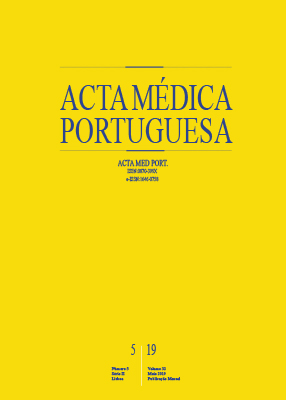Hypokalemic Paresis in Adolescent: A Case Report
DOI:
https://doi.org/10.20344/amp.10497Keywords:
dolescent, Calcium Channels/genetics, Hypokalemia/genetics, Hypokalemic Periodic ParalysisAbstract
Familial hypokalaemic periodic paralysis is a rare autosomal dominant neuromuscular disease characterized by episodic attacks of flaccid paralysis with concomitant hypokalaemia. We present a case of a 15-year-old male adolescent observed in the pediatric emergency department by flaccid paresis of the 4 limbs of sudden onset and progressive worsening. In the anamnesis, corticosteroid and antihistamine intake were observed on the previous day for urticaria and family history of transient episodes of flaccid paralysis in adolescence, asymptomatic after the fourth decade of life, without an established diagnosis. Diagnostic tests revealed hypokalaemia (K + < 2.4 mEq/L), without hypokaluria and without other changes. Symptomatology resolution after supplementation with potassium was verified until normalization of kaliemia. Flaccid paralysis is a rare form of presentation of hypokalaemia. Several etiologies may be involved in the child or adolescent presenting with acute flaccid paralysis. The description of this case draws attention to the importance of the knowledge of this entity, because if recognized and treated properly, patients usually recover without sequelae.
Downloads
Downloads
Published
How to Cite
Issue
Section
License
All the articles published in the AMP are open access and comply with the requirements of funding agencies or academic institutions. The AMP is governed by the terms of the Creative Commons ‘Attribution – Non-Commercial Use - (CC-BY-NC)’ license, regarding the use by third parties.
It is the author’s responsibility to obtain approval for the reproduction of figures, tables, etc. from other publications.
Upon acceptance of an article for publication, the authors will be asked to complete the ICMJE “Copyright Liability and Copyright Sharing Statement “(http://www.actamedicaportuguesa.com/info/AMP-NormasPublicacao.pdf) and the “Declaration of Potential Conflicts of Interest” (http:// www.icmje.org/conflicts-of-interest). An e-mail will be sent to the corresponding author to acknowledge receipt of the manuscript.
After publication, the authors are authorised to make their articles available in repositories of their institutions of origin, as long as they always mention where they were published and according to the Creative Commons license.









